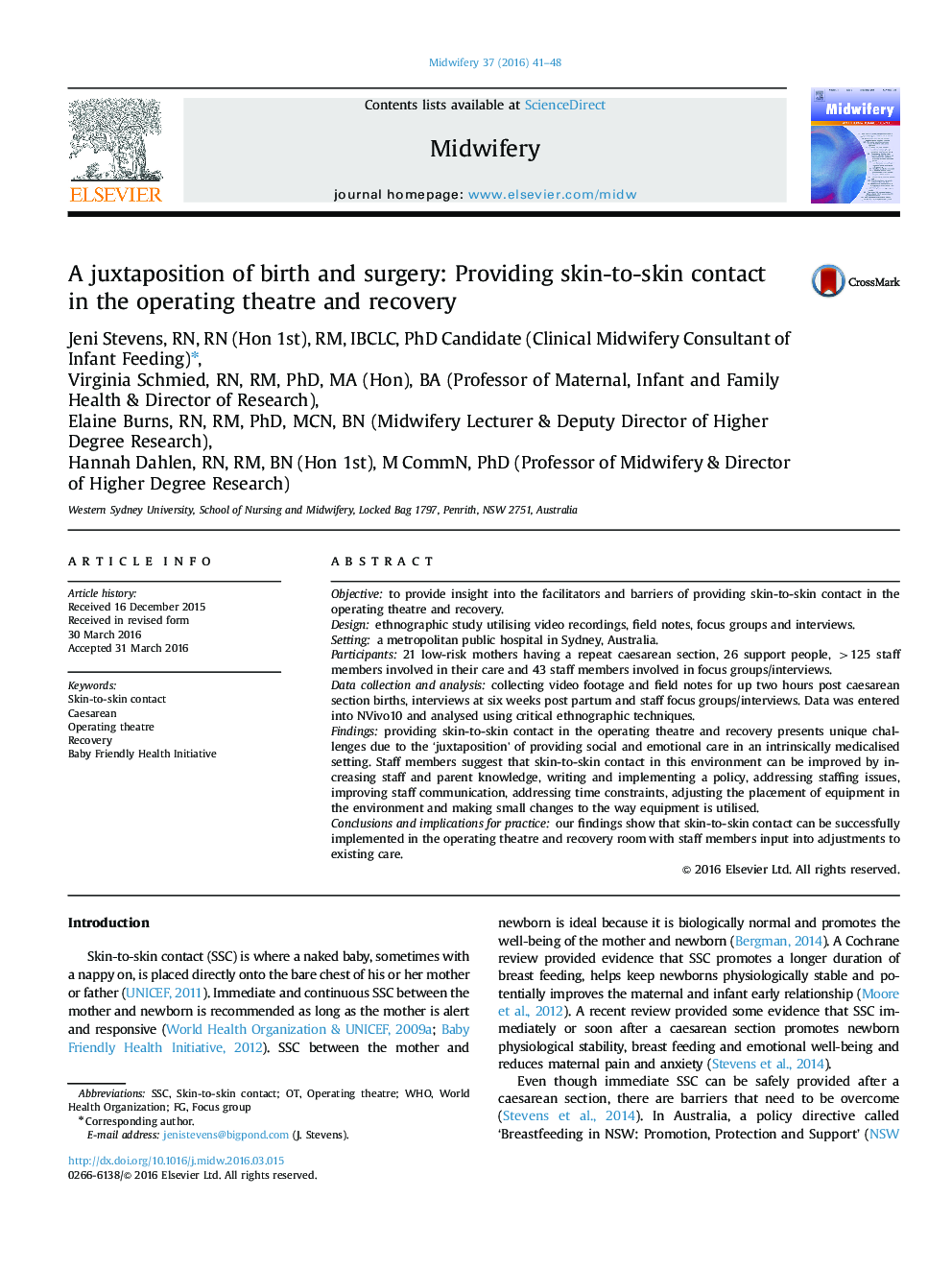| Article ID | Journal | Published Year | Pages | File Type |
|---|---|---|---|---|
| 1084452 | Midwifery | 2016 | 8 Pages |
Factors which may contribute to overcoming the inherent conflict between birth and surgery and increase the opportunities for SSC:•Educate staff and parents on the importance of SSC.•Use a policy to set standards for practice and to avoid ambiguity of staff roles.•Enable innovative staffing models to improve the facilitation of SSC in the operating theatre.•Consider redesigning the operating theatre space.•Employ simple changes to make SSC easier to achieve (see Table 5).
Objectiveto provide insight into the facilitators and barriers of providing skin-to-skin contact in the operating theatre and recovery.Designethnographic study utilising video recordings, field notes, focus groups and interviews.Settinga metropolitan public hospital in Sydney, Australia.Participants21 low-risk mothers having a repeat caesarean section, 26 support people, >125 staff members involved in their care and 43 staff members involved in focus groups/interviews.Data collection and analysiscollecting video footage and field notes for up two hours post caesarean section births, interviews at six weeks post partum and staff focus groups/interviews. Data was entered into NVivo10 and analysed using critical ethnographic techniques.Findingsproviding skin-to-skin contact in the operating theatre and recovery presents unique challenges due to the ‘juxtaposition’ of providing social and emotional care in an intrinsically medicalised setting. Staff members suggest that skin-to-skin contact in this environment can be improved by increasing staff and parent knowledge, writing and implementing a policy, addressing staffing issues, improving staff communication, addressing time constraints, adjusting the placement of equipment in the environment and making small changes to the way equipment is utilised.Conclusions and implications for practiceour findings show that skin-to-skin contact can be successfully implemented in the operating theatre and recovery room with staff members input into adjustments to existing care.
